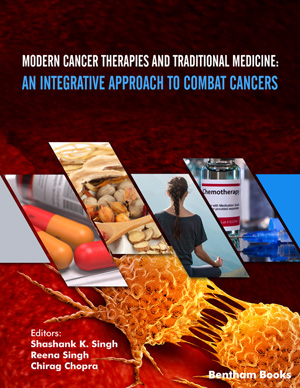
Abstract
Background: Triple-negative breast cancer (TNBC) has the poorest prognosis among all breast cancer subtypes. While several tumor types are excepted to have a curative response to immunotherapy through the AT-rich interaction domain 1A (ARID1A) gene, its role in TNBC remains unclear.
Methods: The expression of the ARID1A gene and immune infiltration in TNBC were analyzed by way and function enrichment analysis. Additionally, 27 gene mutations, including ARID1A mutation, were detected in paraffin-embedded TNBC specimens and normal breast specimens using Next Generation Sequencing (NGS). Immunohistochemical staining was employed to detect the expression of AIRD1A, TP53, Ki67, CD4, CD8, and PD-L1 proteins in TNBC and the adjacent normal tissue samples.
Results: The bioinformatics analysis revealed that ARID1A was mutated in TNBC and significantly associated with tumor immune infiltration. NGS analysis showed a high mutation rate of ARID1A (35%) in TNBC, but the mutation status of ARID1A was not associated with age at onset, lymph node metastasis, pathological grade, or Ki67 index. Low expression or loss of AIRD1A was more commonly observed in TNBC tissues (36/108) as compared to normal tissues (3/25). Positive expression of CD8 and PD-L1 was observed in TNBC tissues with low ARID1A expression. ARID1A mutation was associated with low protein expression, and patients with ARID1A mutation or low protein expression had shorter progression-free survival.
Conclusion: The ARID1A mutation and low expression are associated with poor prognosis and high immune infiltration in TNBC, and might be biomarkers for TNBC prognosis and immunotherapy efficacy.
Graphical Abstract
[http://dx.doi.org/10.1016/j.semcancer.2020.06.005] [PMID: 32544511]
[http://dx.doi.org/10.1245/s10434-019-07565-8] [PMID: 31342401]
[http://dx.doi.org/10.1371/journal.pmed.1000279] [PMID: 20520800]
[http://dx.doi.org/10.1002/cncr.30498] [PMID: 28085182]
[http://dx.doi.org/10.3322/caac.21654] [PMID: 33433946]
[http://dx.doi.org/10.1093/annonc/mdx821] [PMID: 29293876]
[http://dx.doi.org/10.1007/s40262-017-0587-4] [PMID: 29063517]
[http://dx.doi.org/10.1016/j.cmet.2020.10.012] [PMID: 33181091]
[http://dx.doi.org/10.1038/s41571-020-0357-3] [PMID: 32303701]
[http://dx.doi.org/10.1042/BST20180043] [PMID: 30467122]
[http://dx.doi.org/10.1038/ng.2628] [PMID: 23644491]
[http://dx.doi.org/10.4161/cbt.28411] [PMID: 24618703]
[http://dx.doi.org/10.1038/nature12146] [PMID: 23698369]
[http://dx.doi.org/10.1038/s41591-018-0012-z] [PMID: 29736026]
[http://dx.doi.org/10.1136/jitc-2019-000438] [PMID: 32111729]
[http://dx.doi.org/10.1038/s41588-019-0541-5] [PMID: 31913353]
[http://dx.doi.org/10.1093/nar/gkz430] [PMID: 31114875]
[http://dx.doi.org/10.1016/j.neo.2022.01.001] [PMID: 35078134]
[http://dx.doi.org/10.1016/j.neo.2017.05.002] [PMID: 28732212]
[http://dx.doi.org/10.1093/nar/gkaa407] [PMID: 32442275]
[http://dx.doi.org/10.1093/bioinformatics/btz363] [PMID: 31510660]
[http://dx.doi.org/10.1136/gutjnl-2015-310839] [PMID: 26801886]
[http://dx.doi.org/10.1038/s41588-019-0554-0] [PMID: 31932695]
[http://dx.doi.org/10.1074/jbc.M205961200] [PMID: 12200431]
[http://dx.doi.org/10.3748/wjg.v21.i7.2159] [PMID: 25717252]
[http://dx.doi.org/10.1016/j.ccell.2017.10.007] [PMID: 29136504]
[http://dx.doi.org/10.1007/s13402-021-00616-x] [PMID: 34109546]
[http://dx.doi.org/10.7150/jca.16602] [PMID: 28123592]
[http://dx.doi.org/10.1016/j.trecan.2020.01.007] [PMID: 32061310]
[http://dx.doi.org/10.1038/cdd.2015.53] [PMID: 26024390]
[http://dx.doi.org/10.1016/j.celrep.2018.03.093] [PMID: 29669295]
[http://dx.doi.org/10.7150/jca.41296] [PMID: 31949479]
[http://dx.doi.org/10.1002/jcp.27782] [PMID: 30520029]
[http://dx.doi.org/10.1186/s12885-020-6668-z] [PMID: 32131780]
[http://dx.doi.org/10.3390/ijms21186968] [PMID: 32971948]
[http://dx.doi.org/10.1038/s41467-019-11403-6] [PMID: 31391455]























